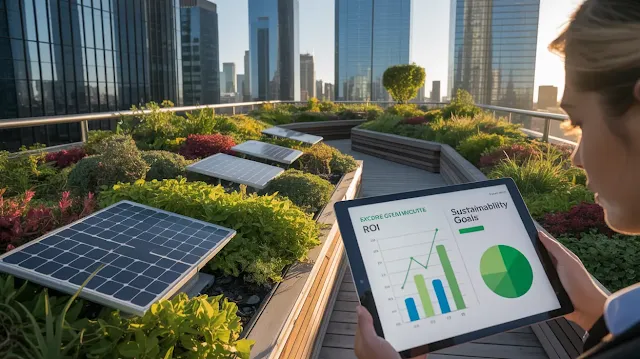Green Infrastructure Investment: Building a Sustainable Future
Introduction: Why Green Infrastructure Matters More Than Ever
Green infrastructure investment has become a pivotal strategy for combating climate change and building sustainable cities. By blending natural systems with modern infrastructure, these investments reduce carbon emissions, support ecological health, and drive economic growth. In this article, we will explore the core concepts behind green infrastructure investment, its benefits, risks, and how it aligns with global development goals.
What Is Green Infrastructure Investment?
Green infrastructure investment refers to the allocation of resources towards eco-friendly, sustainable systems that integrate natural processes into built environments. This can include:
Green roofs and wallsUrban tree canopies
Permeable pavements
Rain gardens and bioswales
Renewable energy grids
These projects enhance urban resilience, reduce flooding, purify air and water, and create healthier, more livable spaces.
Understanding Green Investment: A Broader Perspective
Green investment, in general, is the practice of investing in initiatives that offer environmental benefits alongside financial returns. This includes renewable energy, waste management, energy efficiency, and sustainable agriculture. Green infrastructure is a subset of this larger movement, focused specifically on urban and environmental design.
Is Investing in Renewable Infrastructure a Smart Financial Move?
Absolutely. While upfront costs can be higher, renewable and green infrastructure projects tend to offer long-term financial stability through:
Lower operational costsEnergy savings
Increased asset value
Government incentives and tax credits
As the world shifts toward sustainability, the demand for green assets continues to grow, offering attractive returns for long-term investors.
Types of Green Infrastructure
Green infrastructure comes in many forms, each serving different environmental and social purposes:
Natural Solutions
WetlandsForest corridors
Urban Solutions
Green roofsStreet trees
Urban agriculture
Technological Solutions
Solar panelsSmart water systems
These various types can be integrated into both public and private projects to achieve environmental and economic benefits.
Risks Associated with Green Infrastructure Investments
No investment is without risk. Green infrastructure may face challenges such as:
High initial capital requirementsRegulatory hurdles
Limited public awareness
Performance uncertainties in new technologies
However, with proper risk assessment and strategic planning, these barriers can be minimized.
Measuring Return on Investment (ROI) in Green Infrastructure
ROI in green infrastructure is both quantitative and qualitative:
Financial ROI: Includes energy savings, reduced operational costs, and increased property valueEnvironmental ROI: Reduced greenhouse gas emissions, improved biodiversity, and better air quality
Social ROI: Enhanced quality of life, public health benefits, and community engagement
Aligning with Development Goals and a Sustainable Future
Investing in green infrastructure supports several UN Sustainable Development Goals (SDGs), including:
Clean water and sanitationAffordable and clean energy
Sustainable cities and communities
Climate action
By prioritizing green infrastructure, governments and private entities contribute to a future that balances economic growth with environmental responsibility.
Conclusion: A Call to Action for Stakeholders
Green infrastructure investment is more than a trend, it’s a necessity for sustainable development. Whether you're a policymaker, investor, or citizen, there are opportunities to contribute to a greener future. Now is the time to embrace green infrastructure as a foundation for resilient, thriving communities.




Write a comment, your opinion matters to us